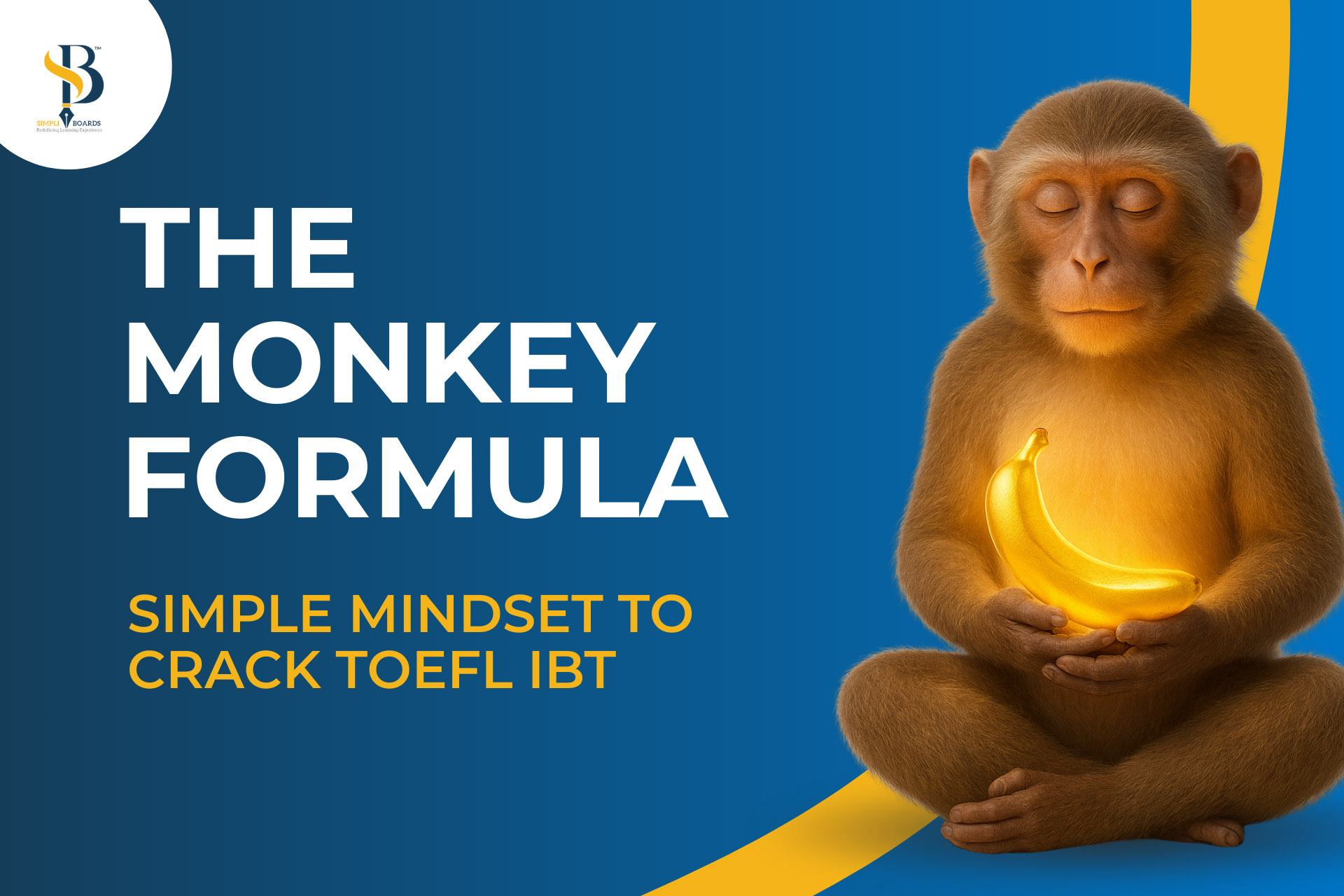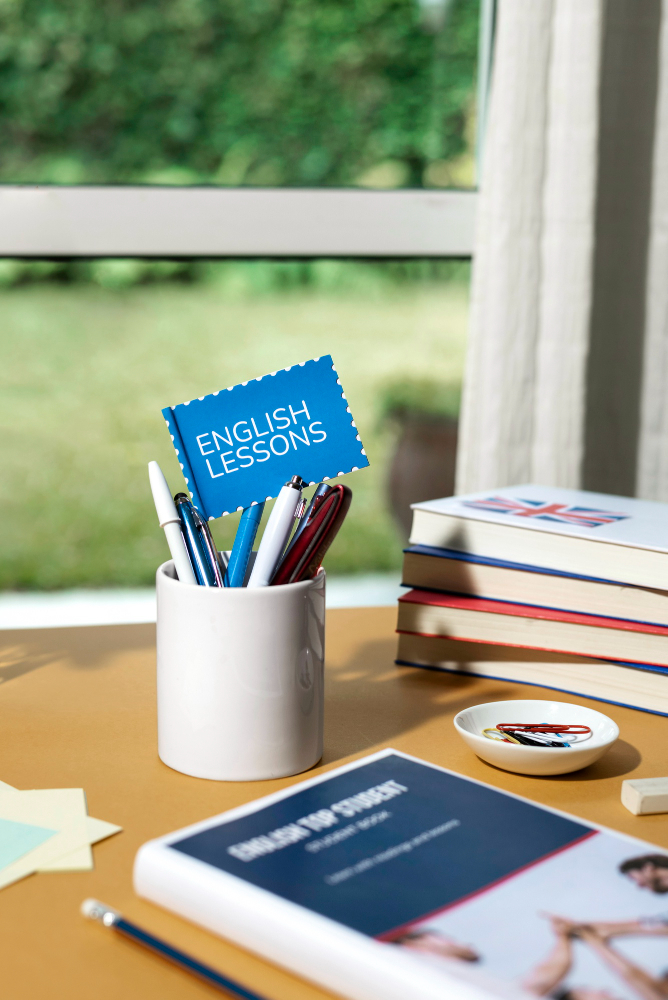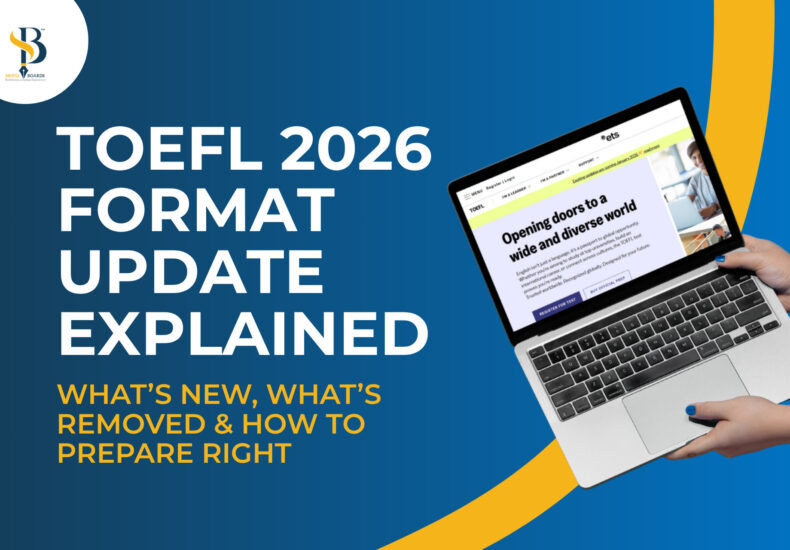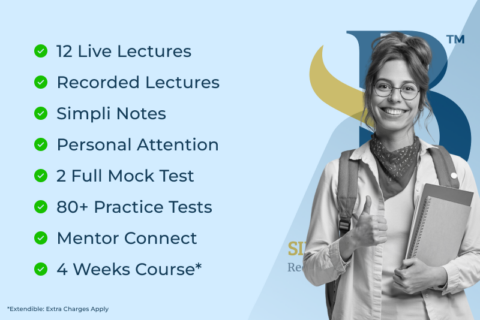
Monkey Formula to crack TOEFL iBT

Written By:
Wangdi Gyalpo Bhutia
Table of Content:
Introduction
Ever sat in front of a TOEFL question, thinking,
“This sounds easy… but why am I still unsure?”
I get it. I’ve seen brilliant students — yes, even those with near-perfect English — fall short on TOEFL. And it’s almost always because they overthink the test.
That’s why I share one strategy my students never forget. I call it:
The Monkey Formula
“If the monkey asks for a banana, don’t throw an apple.”
Here’s how you can make the most of your Simpli Boards journey.

Why the Monkey Formula Works

TOEFL isn’t testing your creativity or outside knowledge. It’s testing how well you can:
– Understand instructions
– Stay relevant
– Deliver information clearly
Task fulfillment is king. If you go off-topic — even slightly — you lose points. The Monkey Formula keeps you focused and precise.
Monkey Formula in TOEFL Reading
TOEFL Reading is academic, dense, and full of traps. Even fluent speakers slip by:
– Adding their own opinion
– Picking answers that “sound smart” but aren’t in the passage
– Skimming instead of carefully following instructions
Golden Rule: Every answer must be directly supported by the passage.
– Factual Information: Stick to what’s explicitly said.
– Inference: Base it only on text hints.
– Vocabulary in Context: Meaning depends on that passage, not your dictionary.
– Sentence Simplification: Keep it precise.
– Prose Summary: Focus only on the main ideas given.
👉 If you can’t point to the sentence that supports your answer, it’s an apple. Find the banana.

Monkey Formula in TOEFL Listening
Listening feels even trickier — one shot at the audio, no pause, no rewind. The trap? Your brain fills gaps with your own logic or outside knowledge.
Rule: If it wasn’t said in the audio, it doesn’t exist for TOEFL.
Example:
– Audio: “The professor explains that the decline in bee populations is linked to pesticide use.”
– Question: “What does the professor say about the decline in bee populations?”
– Banana: It’s linked to pesticide use.
– Apple: Climate change. (True in life, but not in the recording.)
How to apply Monkey Formula in Listening:
– Gist → Main point or purpose.
– Detail → Exact note you heard.
– Function → Why the speaker said it.
– Attitude → Proven by vocal clues, not imagination.
– Inference → Still only from the audio.
👉 Before you answer, ask: Did I actually hear this? If yes → banana. If no → apple.
Monkey-Proof Test Day Tips
– Take focused notes → Write only what supports the main point.
– Watch signal words → “However,” “in contrast,” “for example.”
– Don’t drift → One missed line = one missed banana.
– Never add outside knowledge → TOEFL only cares about what’s given.
How Simpli Boards Helps You Apply the Formula
Cracking TOEFL isn’t about endless hours. It’s about smart strategy. At Simpli Boards, our TOEFL Prep Course is built on this principle.
You’ll get:
– Instructor-led guidance to master strategies like the Monkey Formula
– Simpli Admission Assist (SAA) + TOEFL Buddies for peer support and accountability
– A balance of live lectures, self-study resources, and mock tests that mirror the real exam
The result? You stop overcomplicating answers, stay relevant, and boost your score across Reading, Listening, Speaking, and Writing.

Your Turn
-
TOEFL
12 Live Lectures Recorded Lectures Trained by Certified Mentors Small Batch for Personal …CA $700.00Original price was: CA $700.00.CA $340.00Current price is: CA $340.00. Add to cart
Have you ever lost points because you gave an apple instead of a banana? Share your story below.
Related posts
 Online Course
Online Course Build a Strong English Vocabulary the Fun and Easy Way
 Online Course
Online Course TOEFL iBT 2026 Format Changes – Everything Students Need to Know
 Online Course
Online Course 



